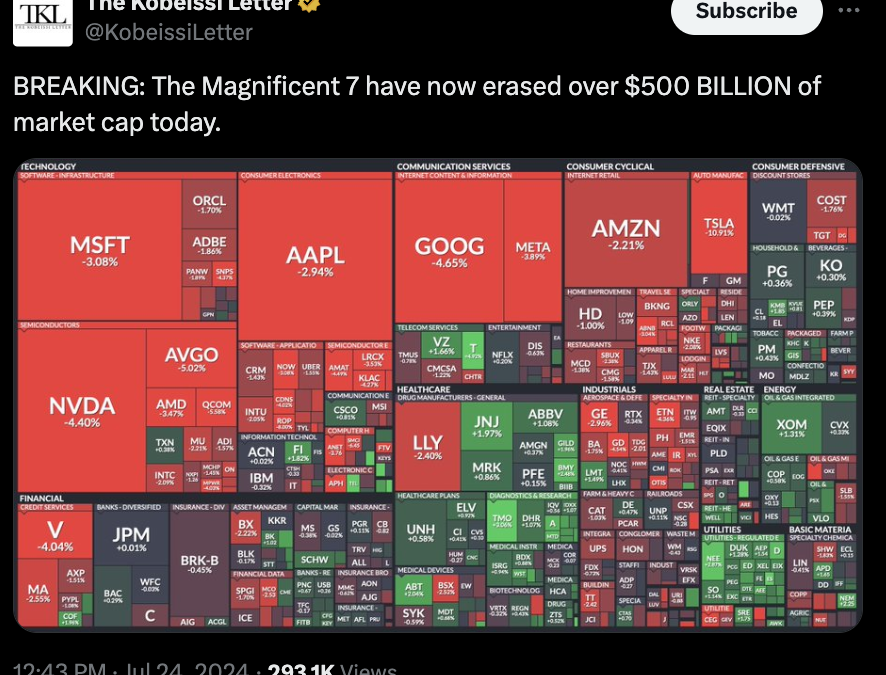It was one of the more tedious investment pitches I’ve sat through.
Well, at least the dude doing the pitching used the word investment. But after about 20 minutes of listening to him talk about what people SHOULD do, I got the sense the word he meant to use was donation.
He used a lot of other words, too – words like tokens, tokenomics, and community.
Conspicuously absent from the conversation, however, were words like incentives and value.
And tokens are meaningless without incentives and value because incentives matter and intentions don’t at the end of the day. And the word SHOULD is as clear a sign as any that someone focuses more on intentions than incentives.
In fact, incentives lie at the heart of all economically motivated activity. Crypto just allows an elegant way to scale those incentives. And I can’t help but chuckle that everyone throwing money hand over fist at crypto creates the incentive to do a lot of handwaving while using words like tokens and tokenomics when asking for money to fund projects.
But crypto isn’t all BS. Bitcoin certainly isn’t. And that’s because Bitcoin does an excellent job of aligning incentives and value.
Aligning Incentive with Value
The big idea behind Bitcoin was that people would value a form of payment with the following properties:
- Fully digital payments to ease transactions
- Permissionless so anyone could use it
- Limited in supply to remove the risk of arbitrary changes to that supply
- And anonymous to some degree (we’ll see how that proves out)
The Bitcoin creator(s) built block rewards for mining into the protocol to promote the trust that Bitcoin delivered that value. This incentive encourages miners to perform the computationally expensive task required to prevent double-spending (meaning I can’t spend the same Bitcoin twice) and make Bitcoin transactions immutable (meaning it can’t be undone once confirmed).
Ethereum took Bitcoin’s incentive system and aligned it with a different set of values.
And that was that people would value a blockchain protocol that gives users an ability to create smart contracts while relying on the same basic incentive system to promote trust. And to pay for the computing power needed to execute the contracts, they would have to use the Ethereum token (ETH).
This alignment of value and incentives put Ethereum at the center of the veritable Cambrian explosion of tokens, smart contracts, and NFTs in 2017 and 2018. We now have over 6,000 tokens that propose to accomplish all sorts of tasks. And many of those tokens got launched on the Ethereum blockchain.
And one of the things you can do with a smart contract is build a self-executing financial derivative.
Code is Law
For example, you could create a smart contract with a counterparty where you receive the difference between the value of the S&P 500 Index on December 31st and today, provided it is higher, or pay the difference in the event the price is lower.
This contract would behave just like a futures contract traded on the Chicago Mercantile Exchange today. But both parties would post some amount of ETH to the contract (the contract effectively custodies the ETH and pays it out to an Ethereum address either party controls depending on the price of the S&P 500 on December 31st.)
But the contract needs some way of knowing the price. And to execute the contract automatically (i.e., to make it smart), the contract needs some way of knowing the S&P 500’s price.
That’s where Oracles come in.
These are other smart contracts that reside on the Ethereum blockchain. They can have their own token and incentives. And they incentivize people to feed data from outside the blockchain to whatever smart contracts need that data.
Oracles provide a way for blockchains to ask the outside world for information, just like the Oracle at Delphi provided information from the Gods to ancient Greeks.
It has other mechanisms as well that allow for a consensus to build that the data is correct. How that happens is a whole other subject (that’s what tokenomics are truly about).
And Tellor does precisely that for financial derivative smart contracts on the Ethereum blockchain.
The Oracle of Derivatives
Tellor is an advanced type of smart contract called a DAO – or decentralized autonomous organization.
Now, the disruptive potential of DAOs is genuinely incredible, and I can’t wait to dig into the topic with you over time. But for today, I want to focus on this singular opportunity.
The native token for Tellor, listed on Coinbase under the symbol TRB, is called a Tribute token.
Ultimately the value of the token is derived from the demand for data to run smart derivative contracts on Ethereum. As that demand rises, so too should the value of TRB. And that demand could truly become astronomical as more and more financial transactions move towards the decentralized world of blockchains.
And rather than waving hands and spouting jargon, the creators of Tellor focused on exactly what matters – incentives and the value of data.



